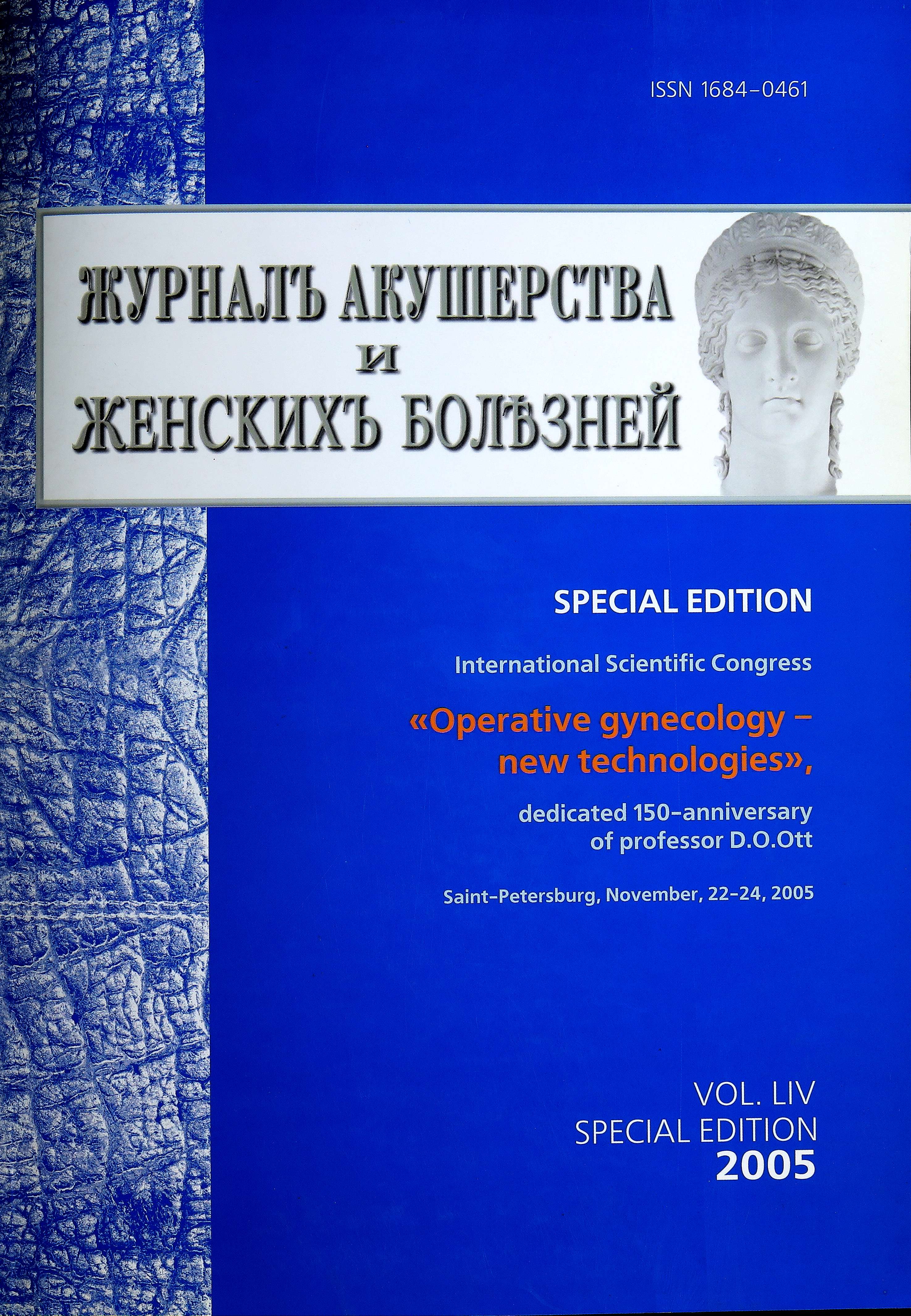The search for the technique of hysterectomy in females with connective tissue dysplasia
- Authors: Mamayeva A.V.1, Yaschuk А.G.1
-
Affiliations:
- Bashkir State Medical University
- Issue: Vol 54, No 5S (2005)
- Pages: 39-40
- Section: Reviews
- Submitted: 15.11.2005
- Accepted: 08.11.2021
- Published: 15.11.2005
- URL: https://journals.eco-vector.com/jowd/article/view/87269
- DOI: https://doi.org/10.17816/JOWD87269
- ID: 87269
Cite item
Abstract
Purpose. To determine differential ethiopathogenetic approach of hysterectomy in females to prevent the occurrence of genital prolapse after hysterectomy.
Full Text
Purpose. To determine differential ethiopathogenetic approach of hysterectomy in females to prevent the occurrence of genital prolapse after hysterectomy.
Materials and methods. It has been proved that systemic connective tissue defect may result in the development vaginal and uterine prolapse, elytroptosis and descent of the womb alongside with the occurrence of such pathologies as hernias, splanchnoptosis, variocose disease, hemorrhagic diatheses. We performed complex examination of 210 females.
Results. We identified a group of 37 patients who underwent hysterectomy and had manifestations of connective tissue dysplasia (CTD) in the form of genital prolapse. The onset of genital ptosis (descent) and its aggravation were already observed during the reproductive period as the major pathology in 15 females, after uterine amputation - in 18 females and after transabdominal uterine extirpation - in 4 females. These patients underwent transvaginal uterine extirpation (13 cases), transvaginal extirpation of uterine cervix stump (18), and anterior and posterior colporrhaphy combined with perineolevatoroplastics (6 cases). Recurrences of genital prolapse were revealed postoperatively in 8 cases: within the first year - in 1 female, within 2-4 years - in 6 females, after 15 years - in 1 subject. Genital prolapses occurring after transvaginal hysterectomy were found in 3 cases, after anterior colporrhaphy and colpoperineolevatoroplasty in 4 females, after transvaginal extirpation of the cervical stump, anterior colporrhaphy and colpoperineolevatoroplasty in 1 female. Different manifestations of CTD (in combination from 3 to 10 symptoms and more in each patient) were revealed in all patients. When assessing values of hemostasiogram all patients were found to demonstrate thrombocytopenia, in 26 patients the decrease of collagen-induced and ADF- induced thrombocyte aggregation were revealed. The activity of von Willebrand's factor was markedly reduced in 18 patients, hyperfibrinogenemia was found in 11 patients. Oxyproline excretion in the daily urine test increased two-fold and more compared to normal levels in 29 females. Serum magnesium levels corresponded either to the lowest values or were below normal values. According to the grading scheme of phenotypic and clinical picture of CTD severe forms, were revealed in 5 patients, moderately severe forms in 19 patients and mild forms in 13 patients.
Conclusions. The most frequent cause of genital prolapse as well as its recurrence that occur after transvaginal hysterectomy, abdominal extirpation and uterine amputation is the connective tissue defect. To prevent genital prolapse in patients with CTD it is advisable to perform transvaginal hysterectomy with sacrospinal MESH-vaginopexy. In abdominal hysterectomy it is recommended to perform sacrovaginopexy in such patients to avoid genital prolapse. In recurrent cases of vaginal stump prolapse (uterine cervix) sacrospinal MESH-vaginoplasty with simultaneous transvaginal stump extirpation (uterine cervix) is indicated.
About the authors
A. V. Mamayeva
Bashkir State Medical University
Author for correspondence.
Email: info@eco-vector.com
Russian Federation, Ufa, Republic of Bashkortostan
А. G. Yaschuk
Bashkir State Medical University
Email: info@eco-vector.com
Russian Federation, Ufa, Republic of Bashkortostan
References
Supplementary files







